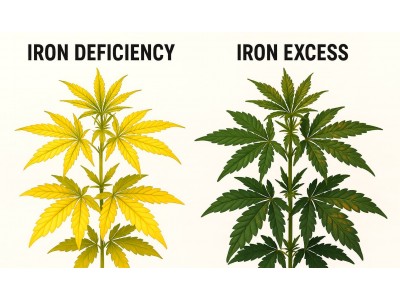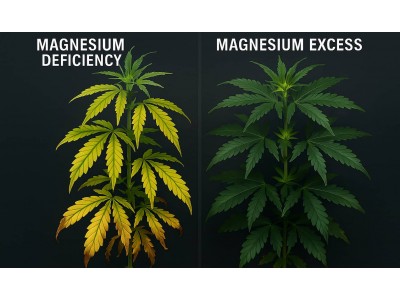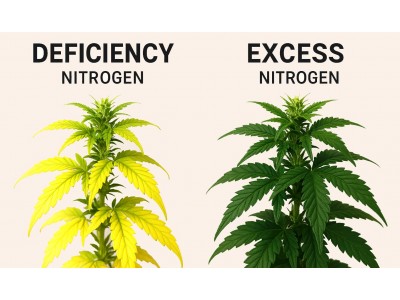0.00€
CheckoutCannabis cultivation: calcium deficiency and excess
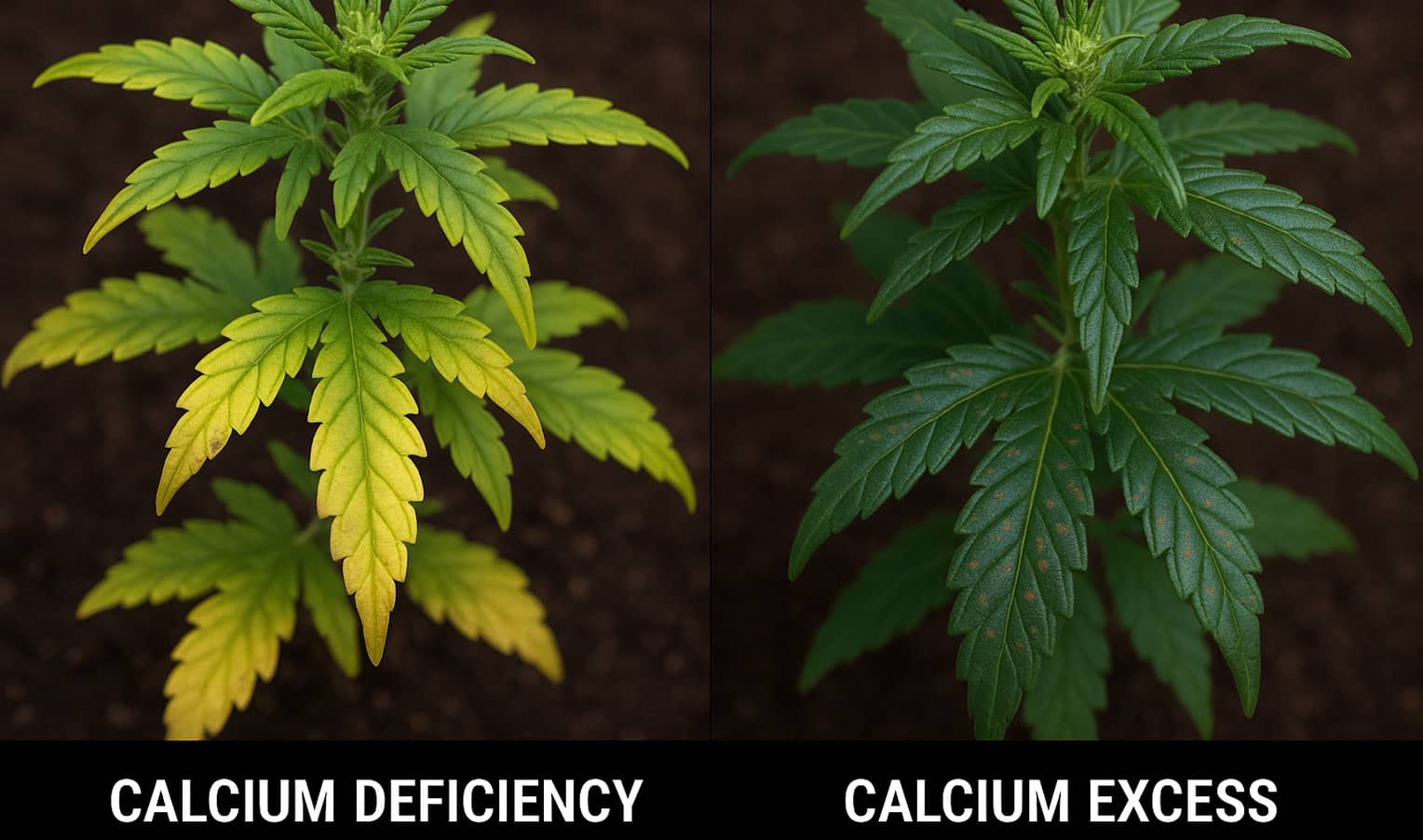
Calcium is a key micronutrient for Cannabis sativa, determining tissue strength, stress resistance, and the coherence of metabolic processes. In materials on crop physiology, including publications around the query cannabis cultivation, its role is consistently at the center of attention because calcium forms the cellular “framework,” influences signaling pathways, and helps young organs develop without structural defects.
In this article, we discuss not the practice, but the interpretation of signs of calcium deficiency and excess to better understand plant conditions and avoid diagnostic mistakes.
The role of calcium in marijuana physiology

Calcium participates in the formation of cell walls and acts as a molecular “bond,” maintaining tissue elasticity and integrity. It is involved in the functioning of enzymes, proteins, and signaling pathways that determine response speed to damage and disease resistance. In the context of marijuana plant nutrition, this is an element influencing the availability of other ions through interaction with organic matter in the medium.
Calcium is poorly mobile within plants, so its deficiency first affects young growth zones. This property determines where and how characteristic signs appear.
Calcium deficiency and excess in cannabis
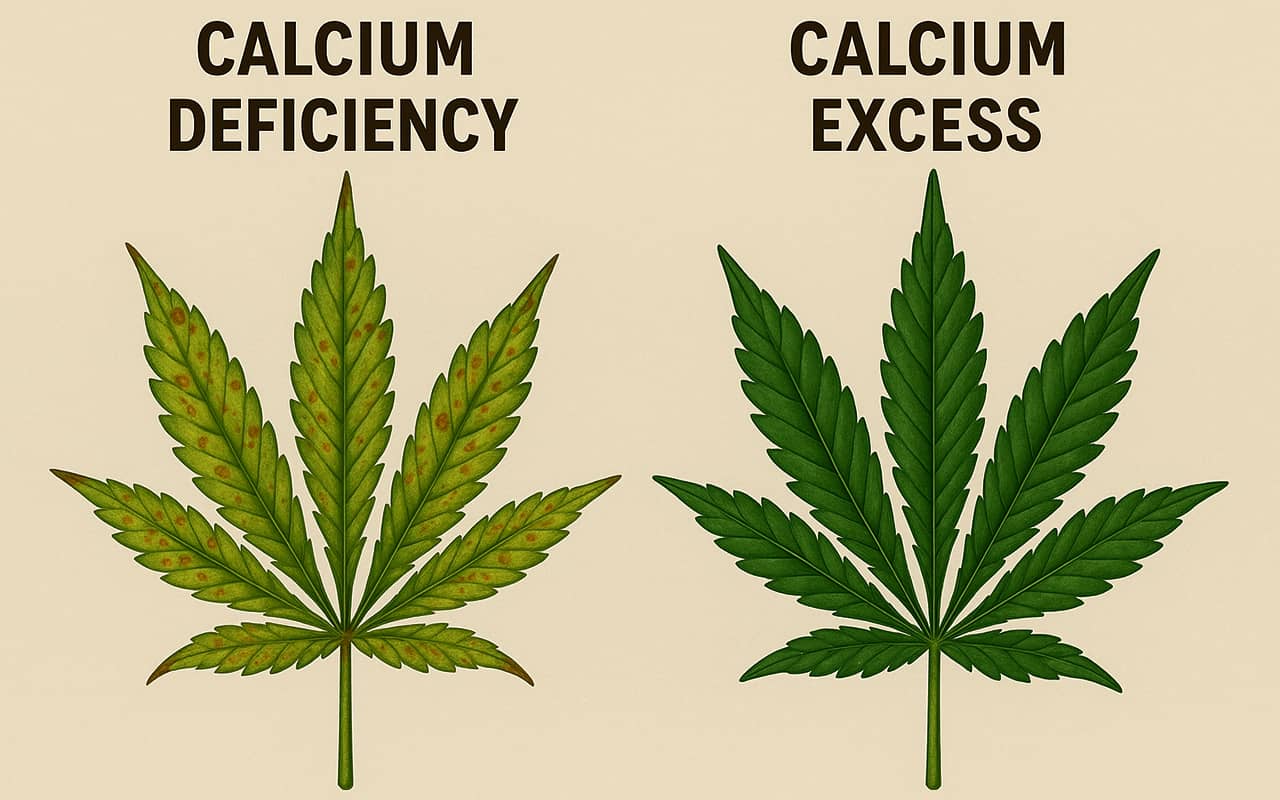
Signs of calcium deficiency in cannabis are more noticeable at the top: new leaves become pale, their shape changes, and the apex grows slower than usual. As the disorder develops, deformation of young leaves intensifies, and secondary effects impact overall vitality. It is important to evaluate the context of conditions and the background of other elements: similar symptoms may result from imbalances of magnesium, potassium, or micronutrients.
Excess calcium in marijuana cultivation is often disguised as other deficiencies, because too much calcium hinders the uptake of potassium, magnesium, iron, and manganese. Externally this looks like chlorosis, stunted growth, and nonspecific deterioration. Additional confusion is caused by traces of heat stress, which can easily be mistaken for a calcium issue.
Interactions and balance
Calcium is antagonistic to a number of elements, so one-sided correction without considering the full picture may worsen the situation. Competent interpretation is always comprehensive: symptoms, condition history, and the overall logic of metabolism are more important than any single marker.
It is useful to observe young tissues (where deviations appear first), correlate signs with recent environmental changes, and avoid hasty conclusions. Our material excludes any practical actions, dosages, or regimes — those belong to separate professional consultation within the legal framework.
Conclusion
Calcium is a system-forming element in cannabis seed cultivation and in the physiology of Cannabis: it strengthens cell walls, supports enzymatic processes, and influences stress resistance. Deficiency most often appears in young tissues as paleness and deformation, while excess disguises itself as a lack of other elements due to antagonism. A correct assessment should always consider the totality of signs and the overall nutritional balance rather than relying on a single symptom.
This text is for informational purposes only and does not contain cultivation instructions. Any actions with plants of the genus Cannabis must comply with the laws of your country/region.

